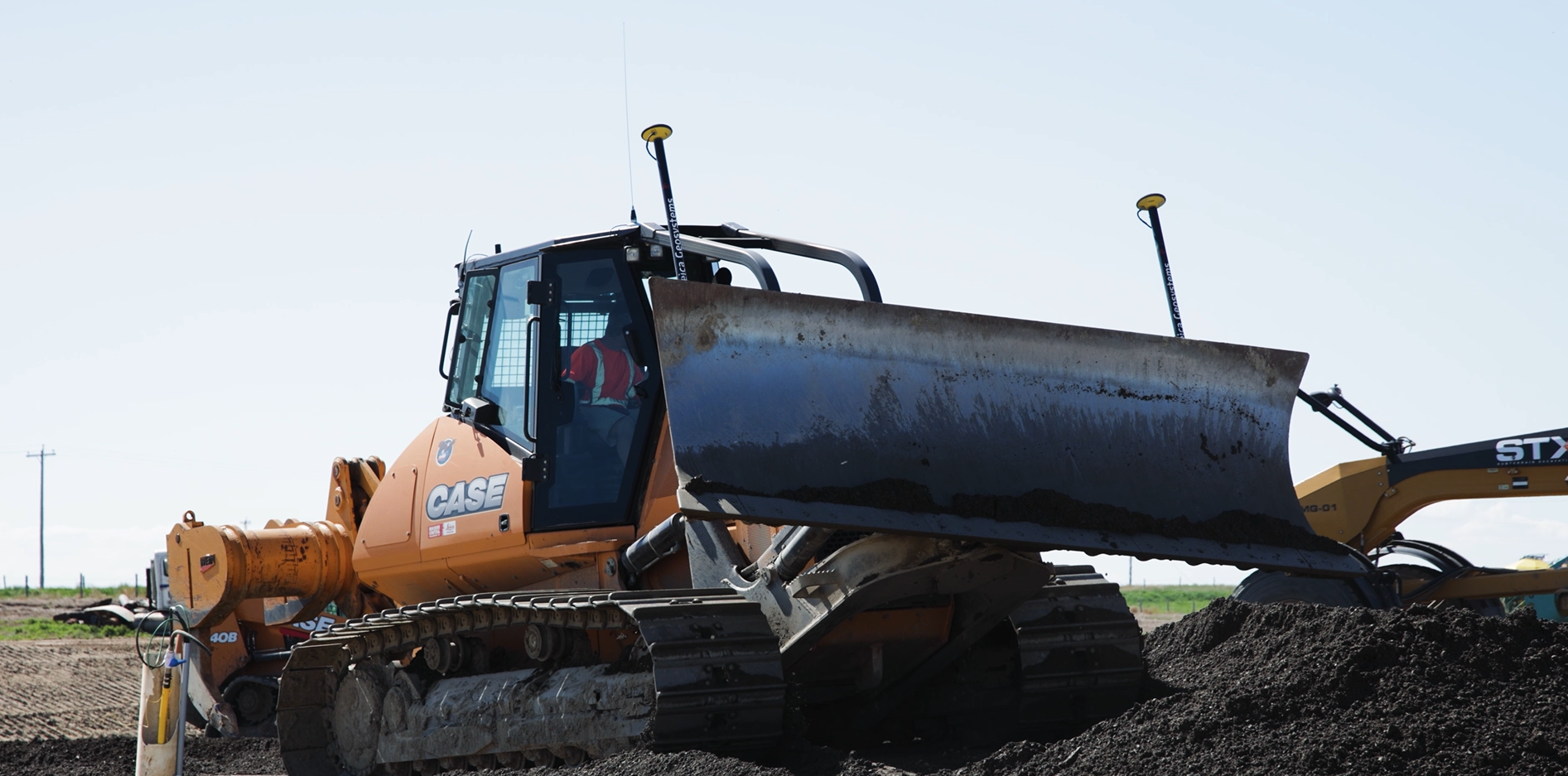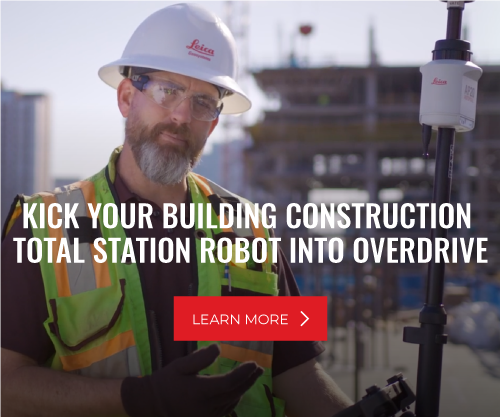If you’re an earthmoving contractor looking to expand your services with the equipment you currently have in your fleet, you might want to consider roller-compacted concrete (RCC).
RCC is a high-strength, low-maintenance alternative to traditional concrete and asphalt pavement. It can be placed using dozers and compacted with rollers.
But there’s a catch.
“With RCC, the clock starts the moment the mix hits the ground, so the grade has to be perfect before you ever touch a roller,” says Justin Brilman, owner of Sub-Terrain Excavating & Trucking Ltd. (STX), a rural excavation firm based in Iron Springs, Alberta, Canada.

STX began performing RCC in 2015 and quickly found that if their equipment is paired with machine control, it could be a profitable service.
“We only have one chance to do it right,” says Justin, who recently shared his RCC and machine control success stories on the Dirtlife Podcast.
As Justin discovered, GPS-enabled dozers and graders can help dirt contractors win RCC jobs, finish them up to 10% faster, and keep material costs in check — turning accuracy straight into margin opportunities.
RCC 101 for Dirt Contractors
So what exactly is roller-compacted concrete, and how does it differ from traditional mix concrete or asphalt paving?
RCC is a zero‑slump dry mix, using similar ingredients as traditional concrete with aggregate, cement, and water — but the water content is much lower.
“It gets mixed in a pugmill as a dry material and gets hauled onto the site with trucks,” Justin says.
It is then placed in thin windrows, and earthmoving contractors can lay it out and grade it with the dozers or graders already in their fleet. The RCC is then compacted tightly with smooth drum rollers, ideally within about 45 minutes.
Key advantages include its strength, quick installation, and long durability with minimal maintenance.
“We end up with a 25-50 MPa product, depending on aggregate qualities,” Justin says.
RCC is a perfect service for dirt contractors to offer for certain applications because:
- It doesn’t require any concrete forms or rebar
- Specialty equipment, such as a paver or concrete mixer, is not necessary
- It takes minimal labor to complete
As an earthmoving contractor serving a rural market, STX primarily uses dozer-placed RCC for feedlot construction and agricultural applications. However, it is also ideally suited for:
- Distribution‑center truck courts
- Remote wind-farm crane pads and solar inverter yards
- Rural intersections, alley rehabs, and bus loops
- Oil-field shop floors and wash pads
With additional equipment, such as a high-density asphalt paver, RCC applications expand to public roads, airports, and large parking lots where a smoother surface is required.
Why Accuracy Matters: The 45‑Minute Reality Check
Time is both an advantage and a challenge with RCC. While it is relatively fast material to place and gain strength, it also must be graded quickly before it sets.
From the time it gets dumped, crews have less than an hour to:
- Spread the material to design grade
- Compact to ≥ 98% density
- Spray cure or cover before it dries out
Errors can lead to over-pouring the mix, cold joints, and failed density tests, which can cause costly rework.
“With dirt, you can work it a couple times to get to the right elevations, but with RCC, it’s limited to 45 minutes from dumping to grade to packing,” Justin says. “So it’s a very, very quick process.”
This makes machine control technology essential.
Systems like Leica iCON 3D GPS grade control for dozers and graders eliminate time-consuming stakes and stringlines — and the survey crews needed to place them.
Justin says Subterrain first tried 2D laser systems for grade control, but that didn’t help them achieve the accuracy tolerances required in the time available.
“A lot of our jobs were retrofit jobs where we had to match existing infrastructure, so the 2D systems just weren’t cutting it anymore,” he says. “We went to 3D so we could build our own models to fit existing infrastructures and increase efficiency on our job sites.”
With 3D GPS grade control, the STX crews have the tools they need to get everything right the first time.
“The biggest benefit from using Leica machine control for us has been the fact that we’re getting accuracies within ±5 mm on most of our projects,” Justin says.
ROI Snapshot for RCC and Machine Control Technology
Justin says STX saves additional time and money by creating their 3D models for RCC in-house.
“We’re not having to wait for engineers, and we can tweak everything in the field,” he says. “It’s just so much nicer for us.”
Spatial Technologies, their technology solutions provider, supported them by answering any questions they had as they got started, though Justin says it was relatively easy to learn after a few online courses and playing around with the system.
“It’s actually a very simple system to run,” Justin says.
Overall, machine control technology offers significant ROI for RCC projects:
- It cuts over-pouring and reduces material costs: Contractors typically report saving up to 2% of material costs when using machine control technology.
- It speeds up production: This results in more billable days per season and the ability to take on more jobs.
“Using Leica machine control, we’re able to get these projects done 10% faster,” Justin says. “At the end of the day, we’re saving money for the customer, and it also puts more money in our pockets.”
Machine control technology opens the world of RCC opportunities for earthmoving fleets, using the iron you already own.
Interested in exploring RCC work further, but need to make sure you’ve got the 3D GPS grade control tools to make it profitable? Talk to one of our heavy construction specialists ready to guide you on your technology journey today.






